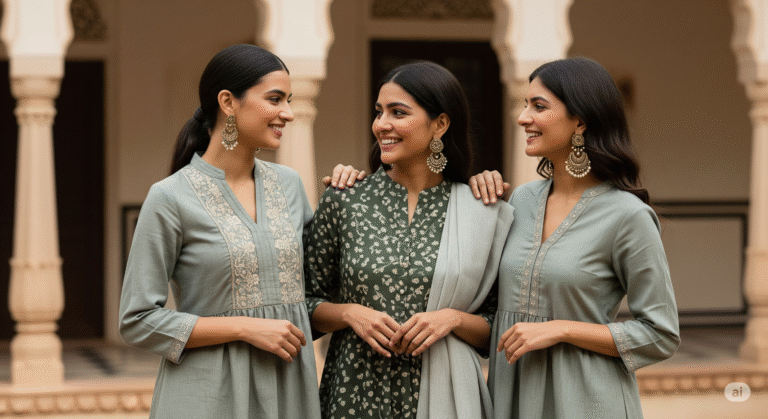The year 2025 is a landmark moment for Indian fashion, not just for its designs, but for its conscience. A powerful green revolution is underway, transforming the industry from the grassroots up. The conversation has shifted decisively from fleeting trends to lasting impact. Eco-friendly fabrics and ethical production are no longer niche concepts but are rapidly becoming the most significant trend, driven by a new generation of aware designers and consumers.
This guide explores the vibrant and growing world of sustainable fashion in India, a movement that beautifully marries our rich textile heritage with a forward-thinking commitment to the planet.
The Rise of Conscious Materials
At the heart of this green wave are the fabrics themselves. In 2025, materials that are kind to the Earth are taking center stage. We are witnessing a massive revival of indigenous, sustainable textiles. Khadi, the hand-spun and hand-woven fabric of freedom, is being celebrated for its zero-carbon footprint and rustic charm.
Beyond Khadi, fabrics like organic cotton (grown without harmful pesticides), bamboo fabric, and hemp are gaining immense popularity. Designers are also innovating with materials like Tencel™ (made from wood pulp) and recycled polyester, proving that luxury and sustainability can coexist beautifully.
Celebrating the Artisan: The Soul of Slow Fashion
Sustainable fashion in India is intrinsically linked to its millions of skilled artisans. The slow fashion movement is putting these master craftspeople back in the spotlight, ensuring they receive fair wages and recognition for their timeless skills. This is a direct challenge to the fast-fashion model that often exploits labor.
When you buy a hand-block printed garment from Jaipur or a handwoven silk saree from Varanasi, you are not just purchasing a piece of clothing. You are investing in a centuries-old craft and supporting a community. In 2025, the story behind the garment—who made it and how it was made—is becoming just as important as the design itself.
The Power of the Conscious Consumer
This entire movement is being fueled by a significant shift in consumer mindset. Today’s shoppers, particularly millennials and Gen Z, are asking critical questions about their purchases. They are more informed, more inquisitive, and demand transparency from the brands they support.
This has led to the rise of homegrown, ethical brands that proudly display their sustainable credentials. Consumers are actively looking for labels that are transparent about their supply chain, use natural dyes, and practice zero-waste principles. Thrifting, upcycling, and renting clothes are also becoming mainstream choices for the eco-conscious Indian wardrobe.
Technology and Innovation: The Future of Green Fashion
While tradition is the soul of Indian sustainable fashion, technology is its future. Innovations are playing a crucial role in making the industry greener. New-age startups are developing plant-based leathers from materials like pineapple leaves and mushrooms.
Furthermore, technology is helping create a “circular fashion” ecosystem, where clothes can be repaired, resold, or recycled into new fibers at the end of their life. Digital platforms are making it easier for consumers to connect with ethical brands and discover sustainable alternatives, creating a transparent and accessible marketplace.
A New Definition of Style
In 2025, sustainable fashion is the new definition of luxury and style in India. It’s a holistic approach that respects the planet, empowers its people, and produces garments that are not only beautiful but also meaningful.
This isn’t just a trend; it’s a fundamental transformation. By choosing to wear clothes that tell a story of care and respect, Indians are not just making a style statement—they are wearing their values and leading a global fashion revolution.

